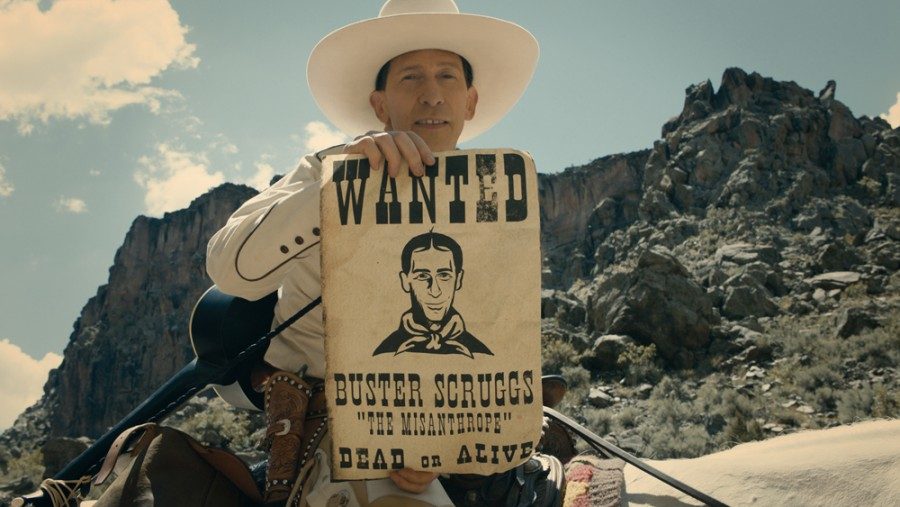Coen Brothers’ ‘The Ballad of Buster Scruggs’ premieres at New Orleans Film Festival
Ethan and Joel Coen’s latest cinematic experiment takes the form of “The Ballad of Buster Scruggs.” As a compilation of six shorter stories, “The Ballad” was originally a slated to be released as a limited Netflix series. At times some of the vignettes stretch a little too long, but the best moments of the stories are filled with the extravagant vistas and wanton violence that make the movie interesting.
The first tale is the titular Ballad of Buster Scruggs. Buster is a singing gunslinger, whose cheerful demeanor and endless singing make his dispensing of swift death nonchalant and classically Western. Portrayed by Tim Blake Nelson, Buster Scruggs comes across as the harmless fool, but his provincial exterior hardly hides his actual violent nature.
The second episode, “Near Algodones,” follows James Franco’s effort to work his way out of a noose as a would-be bankrobber after he’s foiled by a teller wearing pots and pans as armor, again evoking humor but also the persistent violence.
The next anecdote, however, leans to a more relaxed note. Called “Meal Ticket,” this section follows Liam Neeson as a grizzled showman escorting the “Artist” (Henry Melling), a soft-spoken man without arms or legs, through the West. People come pay to listen to the Artist recites various texts. At times, this particular story feels a bit long, but the tone is established. There is a focus on death, on the concept of killing and dying, as it appears in the schema of the “Wild West.” “Meal Ticket” is almost a break from the repetitive killing, absent of the characteristic clean shot through the forehead so emphasized throughout the film. It’s a slow section, but it’s important for the arc of the film as a buffer after the first phalanx of western tales.
The next episode, “All Gold Canyon,” follows Tom Waits as an old prospector trying to find gold in a vivid, beautifully shot valley. It’s a gorgeous sequence, but the quiet, ambling prospector kind of feels like filler before the fifth episode in the sequence.
Second to last, “The Gal Who Got Rattled” has perfect energy. Zoe Kazan plays a lone women traveling to Oregon after her brother dies from cholera. This episode has the western violence characteristic so far, but it also has a unique weight and significance.
The final section, “The Mortal Remains,” provides the perfect conclusion to the anthology. It follows a group of stagecoach passengers as their guides slowly reveal the truth about the nature of the ride they’ve undertaken.
The film is dark, but in a way that makes light of dark things. As an anthology, it’s a strange but interesting collection of not quite classically western tales of people as they live and die.
Leave a Comment
Your donation will support the student journalists of Tulane University. Your contribution will allow us to purchase equipment and cover our annual website hosting costs.



Tom Thurman • Oct 31, 2018 at 8:59 am
I am bringing my new documentary to screen next Wednesday the 7th on Tulane’s campus: “Robert Penn Warren: A Vision.” Warren is the only writer ever to win a Pulitzer Prize in both fiction and poetry. He is the author of “All the King’s Men”, a novel set in Louisiana that resonates even stronger today. Some of the film was shot in New Orleans.
Another angle: I used to teach at Tulane. This would be a homecoming, of sorts……
Interested in covering this? I can supply interview, poster, photos, etc.
Best,
Tom Thurman
Director: Robert Penn Warren: A Vision
Lexington, KY
cell: 859 361 9278